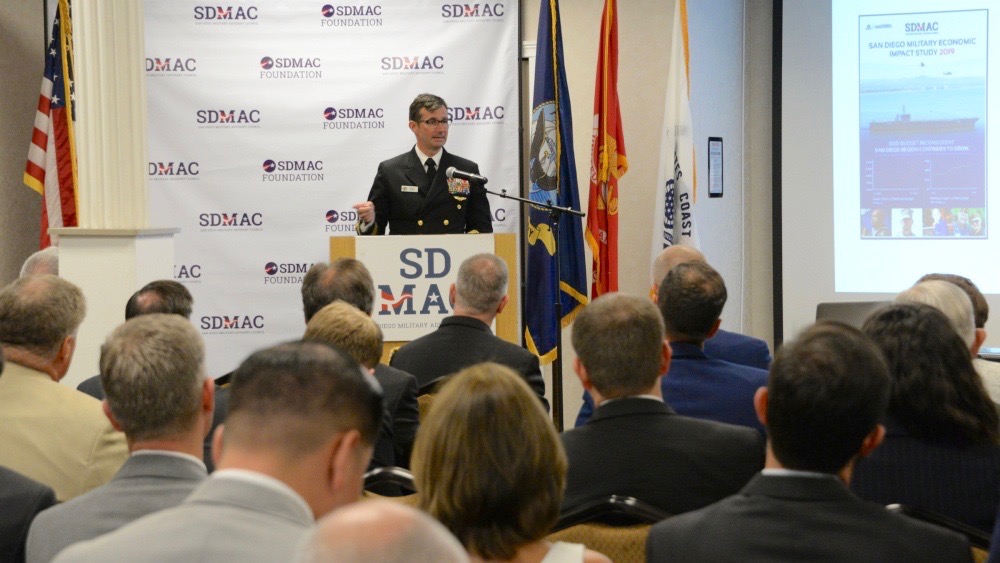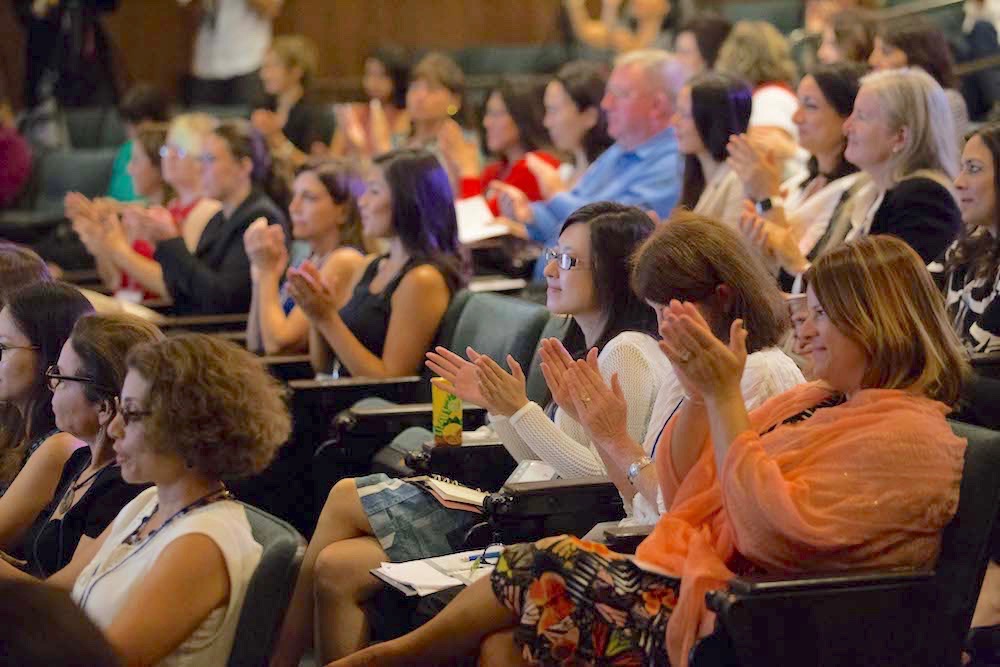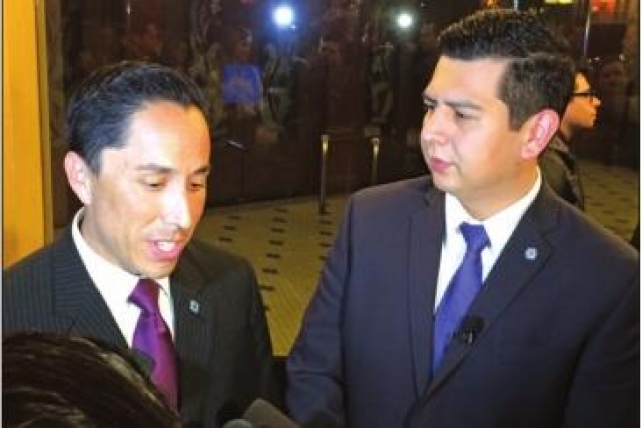Daily Business Report-Oct. 14, 2019
Rear Adm. Christian Becker, commander, Naval Information Warfare Systems Command, provides remarks during the roll out of the San Diego Military Advisory Council annual economic impact study. (U.S. Navy photo by Rick Naystatt)
Naval system’s economic footprint in San Diego
forecast to grow to $3.5 billion in fiscal 2019
The Naval Information Warfare Systems Command (NAVWAR), the center for military communication technology development and procurement, generated an estimated $3.2 billion to the San Diego region’s economy and more than 26,000 jobs during 2018, and is projected to grow to $3.5 billion and 29,000 jobs in fiscal year 2019.
That assessment is from the San Diego Military Advisory Council’s annual economic impact study of NAVWAR that was presented last Thursday at the Admiral Kidd Conference Center in San Diego.
According to the report NAVWAR employed close to 5,200 people in San Diego, with about 270 military workers and 4,900 civilian employees. Their combined compensation, including wages and benefits, totaled nearly $800 million. Of these employees, many are highly educated with more than four-fifths of them holding at least a four-year college degree, and about two-fifths holding a Master’s or Doctorate degree.
“NAVWAR has a long history with San Diego, as the region has been a strong partner in executing our mission of delivering and sustaining information warfare capabilities for the Fleet and our partners around the world,” said NAVWAR Commander Rear Adm. Christian Becker. “This economic impact study helps us better understand the details of our relationship and how together we support our mutual success today as we prepare for the conflicts of the future from seabed to space and in cyberspace.”
______________________
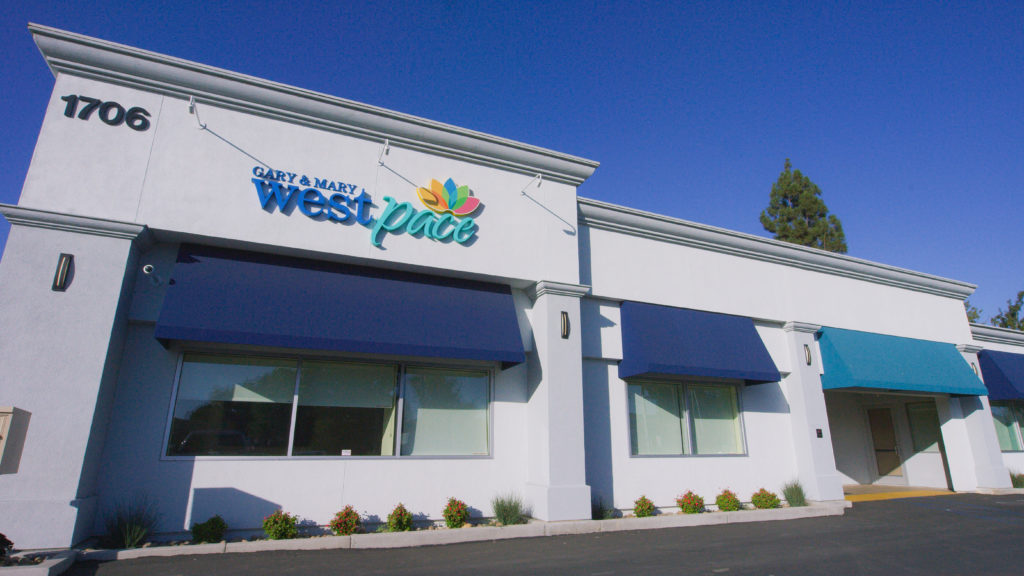
Gary and Mary West PACE program
for the elderly opens in San Marcos
PACE, which stands for Program of All-inclusive Care for the Elderly, has come to North County with the opening of the nonprofit Gary and Mary West PACE in San Marcos. Established with a grant from the Gary and Mary West Foundation, the nearly 20,000-square-foot center and its team, including physicians, social workers, nurses, nutritionists, and physical and occupational therapists, offers high-quality, comprehensive, and coordinated health care, social services and support for vulnerable seniors with chronic care needs who want to successfully age in place rather than in a nursing home.
Gary and Mary West PACE, located at 1706 Descanso Ave., San Marcos, provides a wide range of services including adult day programs, medical care, social services, dentistry, home care and physical, occupational and speech therapy.
Transportation to and from the center and outside medical appointments is provided, as well as social activities, meals, pharmacy, long-term services and supports, and caregiver training and support groups.
______________________

Center for Medicinal Cannabis Research
awards grants for five novel studies
The Center for Medicinal Cannabis Research (CMCR) at University of California San Diego School of Medicine has announced $3 million in research grants to explore new applications of cannabis for a number of novel medical applications.
The grant funding, to be allocated to five California-based research teams, will be used to study the efficacy and safety of medical cannabis as both a supplementary or alternative treatment for schizophrenia, rheumatoid arthritis, insomnia, alcohol dependence and anxiety linked to anorexia.
The five grants are funded by California Proposition 64, which was passed on the Nov. 8, 2016 ballot and legalized recreational marijuana in the state. The measure allocated tax revenue for research on potential new drugs, treatment and health and safety programs related to marijuana and medical cannabis.
Click here for the five grants.
______________________

Airport Innovation Lab to field
test third group of companies
Airport-oriented solutions ranging from autonomous security robots to an augmented reality experience are being field tested in the Airport Innovation Lab at San Diego International Airport.
The third group of innovators welcomed into the Lab’s 16-week program consists of six companies. Until Dec. 13, they will beta test and refine their ideas in an operating airport setting. The lab occupies part of the former Commuter Terminal building at San Diego. The six companies and their concepts are:
• Cloud Club – Purposeful daydreaming sessions to reduce stress and anxiety, and enhance overall well-being;
• Lift Your Eyes – Virtual and augmented reality experience targeting pre-teens and teens with travel-oriented content;
• Lorenzo Designs – Flexible, programmable, illuminated LED stanchion belts to direct traffic and improve way-finding;
• Nüdel Kart– Mobile, deconstructable play carts to engage children in playful learning in an airport;
• NXT Robotics – Autonomous robots to support airport security monitoring that employ “cognitive software”; and
• QBRIO Inc.– Turning automobiles (initially the BMW I-3 model) into private lounge-like transport for the professional traveler.
“This may be our most exciting batch to date,” said Rick Belliotti, director of customer experience and innovation at San Diego Airport. “These are groundbreaking ideas that address and potentially improve the airport experience.”
At the end of the program, successful innovators have the potential to win a contract from the San Diego County Regional Airport Authority, the airport’s owner and operator, and/or gain entry to other airports and similar businesses, including other transportation hubs; convention centers; shopping malls; and large venues such as ballparks, theme parks and hotels.
The Airport Innovation Lab will begin recruiting for its fourth group of innovators in late autumn 2019.
______________________
Chula Vista drone program surpasses
1,000 missions in support of patrol operations
The Chula Vista Police Department’s (CVPD) Drone as a First Responder (DFR) program reached a major milestone, surpassing 1,000 missions in support of patrol operations.
The innovative DFR program is part of the Federal Aviation Administration’s UAS Integration Pilot Program (IPP), which began in 2018. Among the primary goals of the IPP is to expand the integration of drones into the National Airspace System.
In response to the FAA’s request for proposals, the city of San Diego established a consortium of public and private entities, including the city of Chula Vista, to collectively apply to be part of the FAA’s Integration Pilot Program.
Chula Vista police launched its DFR program with a single drone that was capable of traveling within a 1-mile radius of the CVPD station. Chula Vista police said that in the year since, it has expanded the program to include four drones that launch from two remote sites and has made 130 arrests in connection with the information collected by the drones.
The Chula Vista Police Department said its program is the first in the United States to complete 1,000 drone missions through the DFR program. The department pointed to the drone’s quick emergency response time, estimated to take an average of 120 seconds, as one of the reasons for the program’s success.
______________________
Social Security benefits
to increase by 1.6 percent in 2020
The cost of living adjustment (COLA) will increase Social Security benefits by 1.6 percent in 2020, an average of about $24 per month for individuals, the Social Security Administration announced.
The increase for 2020 is notably less than the 2.8 percent bump received this year, but higher than the average over the past decade (1.4 percent).
The COLA will boost the average Social Security retirement benefit for a single person by $288 per year. The average retirement check is expected to be $1,479 in December 2019 before the COLA raises the benefit to $1,503 a month later, according to the administration.
The monthly premium for Medicare Part B recipients is expected to be announced soon. This premium could affect individual Social Security benefits because it is deducted directly from benefit payments. Part B Medicare covers physician and diagnostic services, outpatient hospital services, certain home health services and durable medical equipment.
______________________

Using machine learning
to hunt down cybercriminals
An increasingly popular form of cyber-attack is to hijack IP addresses for a range of goals, from sending spam and malware to stealing Bitcoin. It’s estimated that in 2017 alone, routing incidents such as IP hijacks affected more than 10 percent of all the world’s routing domains. There have been major incidents at Amazon, Google and even nation-states – a study last year suggested that a Chinese telecom company used the approach to gather intelligence on western countries by rerouting their internet traffic through China.
Existing efforts to detect IP hijacks tend to look at specific cases only when they’re already in process. But what if we could predict these incidents in advance by tracing things back to the actual hijackers themselves?
That’s the idea behind a new machine learning system developed by researchers at MIT’s Computer Science and Artificial Intelligence Laboratory (CSAIL) and the Center for Applied Internet Data Analysis (CAIDA), based at the San Diego Supercomputer Center at UC San Diego. By illuminating some of the common qualities of what they call “serial hijackers,” the team trained their system to be able to identify roughly 800 suspicious networks — and found that some of them had been hijacking IP addresses for years.
______________________
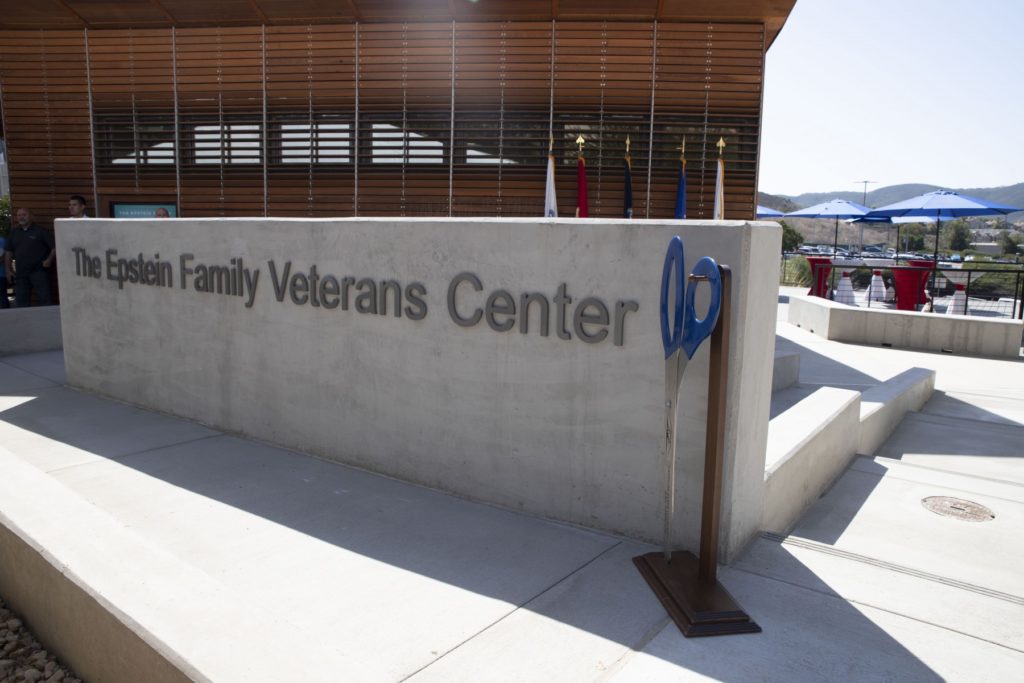
Cal State San Marcos celebrates
opening of Epstein Family Veterans Center
Cal State San Marcos students, faculty, staff and community members celebrated the grand opening of the Epstein Family Veterans Center during a ribbon-cutting ceremony on Oct. 10.
“The expansion and renovation of the Epstein Family Veterans Center are important signs of our university’s ongoing commitment to our student veterans and their families,” CSUSM President Ellen Neufeldt told attendees. “All of us at CSUSM take great pride in supporting those who have served our country.”
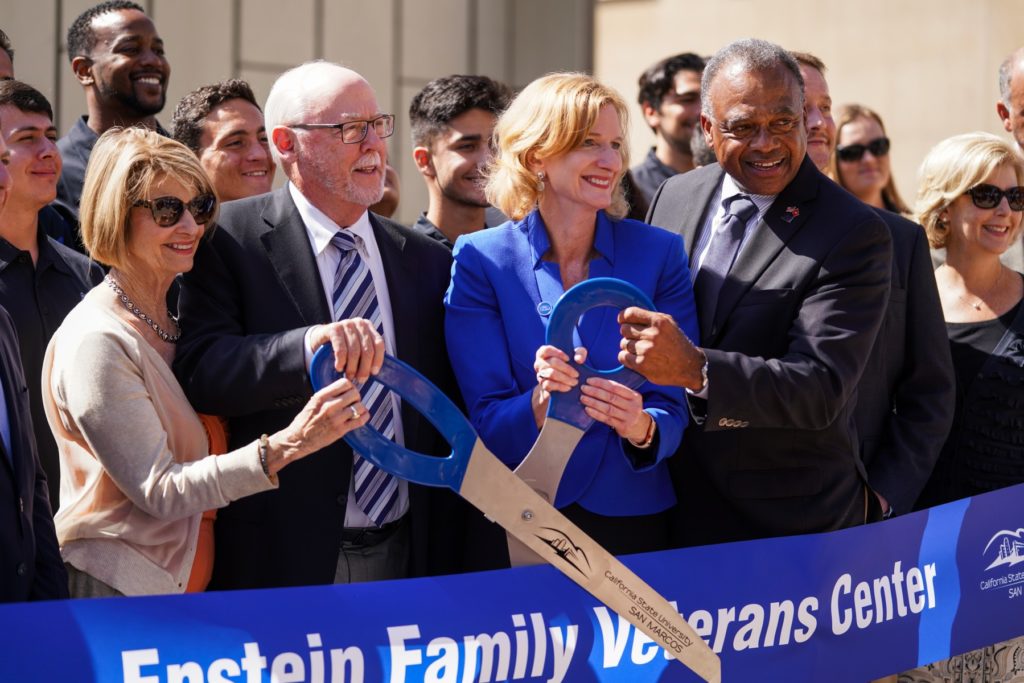
The expansion and renovation was made possible thanks to a $1 million gift from the Epstein Family Foundation in 2017. It was the most significant gift in support of CSUSM’s student veterans since the donation of the center building in 2014. The Epsteins’ gift provided funds for the physical expansion of the existing center while also providing an endowment to fund critical programs to support veterans and their families.

